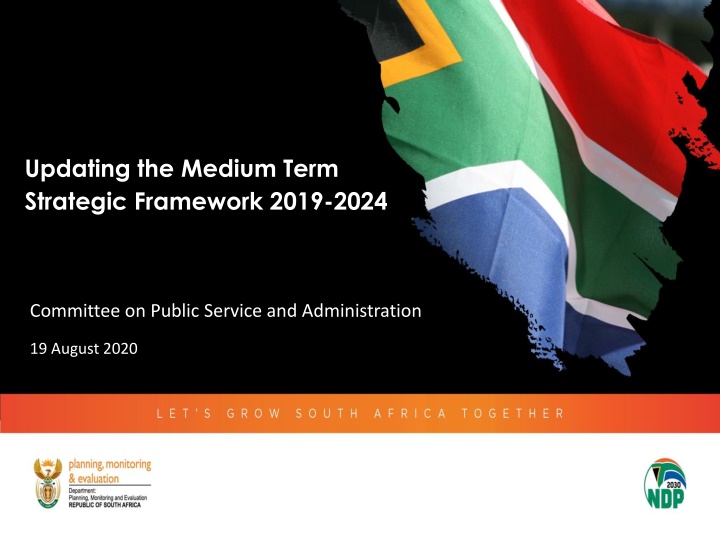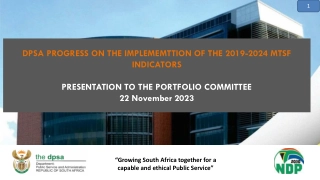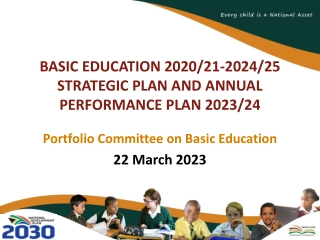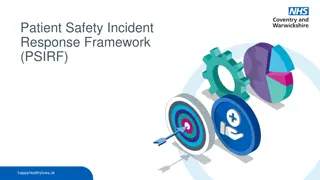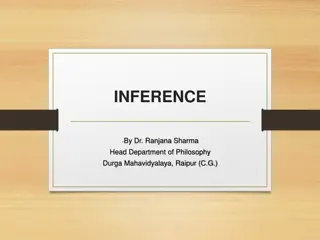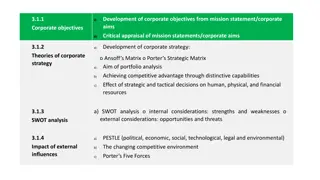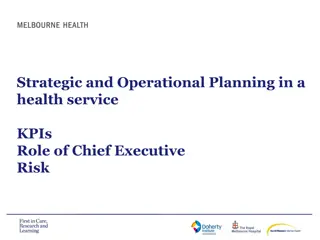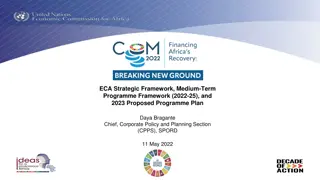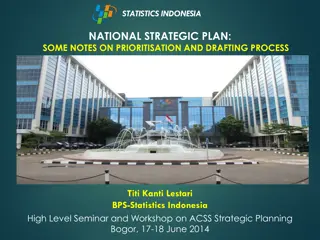Medium-Term Strategic Framework 2019-2024 Update: Responding to the Changing Environment
The Medium-Term Strategic Framework 2019-2024 is being updated to address the impact of the COVID-19 pandemic on South Africa's economic growth. Key priorities include building a capable state, economic transformation, and social welfare. The update involves integrating key plans, such as the National Covid-19 Response Plan and Economic Recovery Plan, into a results-based framework. The roadmap outlines milestones for consultation, finalization, and publication, emphasizing coordination and accountability for inclusive development.
Download Presentation

Please find below an Image/Link to download the presentation.
The content on the website is provided AS IS for your information and personal use only. It may not be sold, licensed, or shared on other websites without obtaining consent from the author.If you encounter any issues during the download, it is possible that the publisher has removed the file from their server.
You are allowed to download the files provided on this website for personal or commercial use, subject to the condition that they are used lawfully. All files are the property of their respective owners.
The content on the website is provided AS IS for your information and personal use only. It may not be sold, licensed, or shared on other websites without obtaining consent from the author.
E N D
Presentation Transcript
Updating the Medium Term Strategic Framework 2019-2024 Committee on Public Service and Administration 19 August 2020
Seven Apex Priorities continue to drive the MTSF 2019-2024 The Seven Priorities are derived from the Electoral Mandate + SONA: Priority 1: A Capable, Ethical and Developmental State Priority 2: Economic Transformation and Job Creation Priority 3: Education, Skills and Health Priority 4: Consolidatingthe Social Wage through Reliable and Quality Basic Services Priority 5: Spatial Integration, Human Settlements and Local Government Priority 6: Social Cohesion and Safe Communities Priority 7: A better Africa and World Cross Cutting Focus Women, Youth & People with Disabilities
The environment has changed: How do we respond? South Africa is experiencing COVID-19 pandemic which has exacerbated our weak economic growth and further strained the national Budget. Government has responded by declaring a National State of Disaster, a National Lockdown supported by a Risk Based Strategy and a R500 billion Relief Package. More needs to done to stablise the environment and to plan for recovery. This will also require building the capability of the State to improve delivery. Improved coordination, integrated planning and efficiency of delivery is required to ensure medium- to long-term recovery and inclusive development.
Key inputs to support the MTSF update NDP 2030 NDP Review Report 4IR Implementation Plan Capture lessons learnt and realign medium- and long-term planning. NDP Review DDM Institutional Arrangements Skills Priority Masterplan MTSF 2019-2024 National Covid-19 Response Plan Capture lessons learnt and realign medium-term planning across sectors. Economic Recovery Plan MTSF Review Revised Fiscal Framework Cluster and Sector Plans The intention integrate all key plans into a results-based framework through the MTSF. This will assist with coordination and ensure that important interventions and milestones are monitored to support delivery and accountability.
Proposed Roadmap & Milestones Preparation: July Aug 2020 Updating: Sept Nov 2020 Finalisation: Dec 2020 - Jan 2021 Consultation with Clusters and departments on Recovery Plans; Working sessions with Cluster and Joint-Cluster Sub- committees; Incorporate National Covid-19 Response Plan; Consultation with FOSAD; Consultation with Provinces; Engagement with MTEC on plans. Consolidate and finalise MTSF update; Issue circular to departments for updating of APPs for 2021; Prepare final MTSF for January Cabinet Lekgotla; Publication of updated MTSF and uploading on DPME website. Develop roadmap & project plan; Consultation and alignment on the NDP Review, 4IR Report, Priority Skills Masterplan, District Development Model; Consultation and awareness with Clusters and FOSAD. Finalise MTSF Monitoring Report. Final updated MTSF presented to Cabinet preparation of State of Nation Address 2021. Present MTSF Bi-Annual Report and MTSF Update Roadmap to Lekgotla for endorsement. Confirmation governmental alignment via PCC and approval through Cabinet. of inter- Lekgotla and Cabinet
Problem Area: Priority-Setting that changes path dependency The institutional structure of government by its nature imposes binding constraints which results in path dependency; A natural aggregation of priorities from multiple stakeholders that lock us it into a developmental path that is not necessarily the most optimal; The aim of priority-setting is to ensure that interventions are considered critical enough to catalyse innovation and growth e.g. for sustainable development, regional or global competitiveness; Resources should not be allocated to ensure that everyone gets just enough, but we should rather prioritise social and economic interventions with the greatest impact.
Establishing criteria for prioritisation Interventions can be evaluated across a range of criteria that would enable prioritisation: Policy-based (e.g. transformation and inequality) Social (e.g. extends life expectancy) Economic (e.g. leveraging private investment) Environmental (e.g. positive environmental impacts) Regional integration (e.g. regional commitments) Technical (e.g. rates of return or benefit/cost/risk analysis) Capacity (e.g. feasibility to implement) Interventions could be assessed independently depending on their nature or a weighted average of multiple criteria can be determined to arrive at a final score for ranking; Prioritisation criteria would then account for both economic and social interventions but would allow for ranking and trade-offs (expert assessments maybe required).
Assessment options for prioritisation The assessment of interventions can be subject to various levels of examination: Screening assessments: Prioritise or exclude interventions based on a set of screening questions, e.g. does this reduce the cost of doing business? Rapid evaluations: E.g. rapid evaluations to assess the impact on competitiveness, growth and employment Holistic evaluations/reviews: Full evaluation of intervention which could also be done on screened interventions These processes can be used independently or progressively to filter and determine the final catalytic interventions that should be prioritised for funding
Aligning Cluster Plans to the MTSF methodology Once catalytic interventions are identified through a priority- setting process these should be aligned to the results-based framework of the MTSF to ensure they are measurable Classification Terminology Impact Long term goals (outcomes) of the NDP Outcome Medium-term or intermediate results for the sector Outputs, programmes and projects that will be produced/developed (short- to medium-term) Interventions (Outputs) What you will do to produce outputs (to be included in operational plans and not MTSF) Activities Indicators Measure of performance Which outputs, programmes and projects will be produced? When will these achieved or delivered? Targets
